Peter Ireland – 5 January, 2013
'What has been' emphasises the documentary tradition’s predication on linear time – the medium’s brief history starring a unique relationship between photography and time that no man may put asunder. But since Barthes the nature of that relationship has been changing. Simple linearity seems to be losing out to something more complex, a kind of visual space-time continuum where a history is as dependent on the space where it happens as the time-frame it happens in.
Wellington
Ben Cauchi
The Sophist’s Mirror
20 October 2012 - 17 February 2013
When artists give talks about their work, question-time seems to yield a different type of query for photographers. Everyone seems to want to know about the camera and the technical processes - in a way that doesn’t apply to, say, painters with their brushes, canvas and paint, sculptors their cardboard, string and flat screens, or pianists their Steinways. Does this peculiar focus point to a reluctance to express ideas relating to photographic imagery? Does it arise from the social horror of questions not being asked at all? Or does it say something about the tenacity of the notion that, really, photographs are just the product of a machine? Picasso once said that when artists get together they don’t discuss theory, they just talk about where you can get the best turpentine. So, maybe it’s just that photographers’ talks are attended largely by other photographers.
But, art professionals do it too. In a recently-published catalogue about the Govett-Brewster’s touring Aberhart show there’s an interview with the photographer, and the second question is about the camera. In a more recent two-page spread in the Listener about The Sophist’s Mirror there is a good deal of space devoted to Cauchi’s cameras. And now, the City Gallery’s Cauchi show Works list devotes the very first paragraph of a short essay to the artist’s technical processes. It’s good copy for the punters maybe, but the medium’s fully grown up now and should be permitted a life independent of this constant mentioning of its parentage. Isn’t the imagery good enough to be getting on with?
A decade ago the bones of Bishop Pompallier, exhumed from a grave in Paris, made a slightly bizarre tour through New Zealand before finally being interred under the altar of St Mary’s Church at Motuti on the northern side of Hokianga Harbour. In circumstances probably replicated elsewhere on the hikoi, the Whanganui ceremony involved one notable thing: all Pakeha speakers referred to the Bishop in the past tense, all Maori in the present. Pompallier may offer a tenuous French connection with the birth of photography, but there’s something in this tenses business connecting with the nature of the medium, a something Ben Cauchi’s work brings to the fore.
The domain of Barthes’ seminal Camera Lucida tends to be of the past tense too. A central thesis is that photographs are evidence of what has been. First published in 1980, the book contained the fruit of his thinking throughout the 1970s when serious photography was still pretty much centred on the documentary tradition. Indeed, the 25 reproductions stretching from 1823 to 1979 in the first English edition of 1982 are firmly in that tradition, the only exception being the frontispiece, Daniel Boudinet’s 1979 polaroid, uniquely for the book in colour. In the thirty years since, not only have photographic imagery and approaches to making it changed and expanded radically, but the thinking and writing surrounding it have come a long way since Barthes’ meditations - possibly at least as much in these thirty years as in the century and more preceding them. The roll-call includes thinkers and writers such as Susan Sontag, Janet Malcolm, Geoff Dyer, Rebecca Solnit, Errol Morris and, closer to home, Judy Annear, Gael Newton and Geoffrey Batchen, but not, it must be pointed out, the screeds of waffle churned out interminably within tertiary institutions, the phrases chasing sense in the same way the writers are chasing their qualifications. This padding applies as much to the advance of critical thinking as clocks do to the movement of the spheres.
What has been emphasises the documentary tradition’s predication on linear time - the medium’s brief history starring a unique relationship between photography and time that no man may put asunder. But since Barthes the nature of that relationship has been changing. Simple linearity seems to be losing out to something more complex, a kind of visual space-time continuum where a history is as dependent on the space where it happens as the time-frame it happens in. Much contemporary photography seems to connect with this phenomenon - in New Zealand it ranges from, say, Neil Pardington’s interiors to Fiona Amundsen’s exteriors - and begins to speak more in a present tense. And not just “the present” but also as “presence”. The what has been is being transfigured into a what is.
Thirty years ago when Warwick Wilson at the then National Museum made daguerreotypes (one’s in Te Papa’s collection) there was no way they could be considered other than curiosities, historical throw-backs given prevailing modernist prescriptions. What has changed over those three decades is a re-engagement with history, the focus shifting away from the new and now of modernism’s premises - although that shift is taking time to impact effectively on still widely-held assumptions and expectations.
It’s the classic chicken and egg situation here: is a renewed interest in photography’s history and processes an effect of this change or is it that its history had reached a critical enough mass to cause naturally a deconstruction of its skeins and modus operandi? When Wilson was at work with his daguerreotypes the standard histories by Gernsheim and Newhall were accepted pretty uncritically as to the information conveyed and the assumptions underpinning its selection, emphases and significance. Take away the modernist foundations and the Eurocentric superstructure and there’s not much left.
Photography’s singular curse was to be burdened by expectations of the real when in fact it was the first virtual. It’s just taken us a century and a half to find out. It’s not an accident that the medium started having a real impact on the art world at the same time post-structuralism was re-shaping the way we think about the nature of the world, where notions of the real, the self etc formerly assumed to be reasonably stable entities were not only deemed not so but investigated and even valued for their instability.
There’s a handful of phenomena that photography seems to have had a particular relationship with: time, light and memory among them. In terms of memory, the relationship’s been a collaboration more than anything. But whatever the nature of those relationships, they’re all being re-evaluated now, and it’s too easy to get hung up on digital developments as if that were the only ground to be shifting, the only issue in town. And it’s equally easy to remain mired in the standard histories’ concept of time, seeing, for instance, Cauchi’s practice merely a revival of what was happening in the early days of photography. (In a very real sense, it’s still the early days of photography anyway.) What Cauchi brings to the current fizzy mix is a warping of time perhaps prefigured by Einsteinian physics which, whatever it means, doesn’t include the sort of linearity assumed until now to be the heartbeat of Western history.
Given Cauchi’s obvious technical debt to the nineteenth century it’s perhaps blindingly obvious that he doesn’t come from nowhere. But if that somewhere is, partially, Aberhart’s long, patient project, the connection may be a little less obvious. Again, it’s too easy to pigeonhole the older photographer into a “colonial Atget” category - against trendsetters such as Hipkins and both Pardingtons his work looks so old-fashioned. Socially, it’s much sexier to have a big Anne Noble than a little Laurence Aberhart. Size does matter when it comes to collector competitiveness and auction house promotion. In fathoming the connection between Aberhart & Cauchi it’s useful to return to Justin Paton’s incomparable essay on the former’s interior subjects, the piece published in a modest catalogue to accompany a show of them at McNamara Gallery Photography in 2002 called The Interior. It’s an essay that indeed focuses on the work, but Paton’s speculations become a mediation on the very nature of photography (as do the images, of course), seeing in these rooms ” … the original ‘dark room’ - camera obscura, Plato’s cave, photography’s primal scene. … Even as Aberhart’s interiors lead us out to the world in all its detail and texture, they lead us back to the dark room, the black box recorder, where light first became an image”.
That “black box recorder” isn’t a bad place to start with Cauchi’s work, especially for any viewer becalmed enough not to see further than a series of empty rooms, for as Paton observes too: “Photography is a beautifully unreliable guide to the world, because its secrets come disguised as explanations”.
More specifically with regard to Cauchi’s work, though, Paton’s Aberhart essay also has these two penetrating observations: “When nineteenth century photographers first headed for foreign countries in search of astonishing sights, ‘the interior’ was the phrase used to describe the dark, mythic heart of unknown landscapes. More than a century later, Aberhart’s argument is that the secrets at the heart of the culture no longer inhabit landscapes; they can now be found, instead, in all those rooms History has passed through and left vacant”. “In Aberhart’s photographs of wharenui, the bowing of space and the slowing of time evokes with tact the altered timescale of the meeting house, where ancestors are no less present than the living.”
It’s not just an altered timescale though, any more than Einstein’s is merely altered. It requires a radical re-examination of the nature of time, what photography is doing in general right now and Cauchi is doing in particular. It’s not old-fashioned, it’s old-fashioning.
Peter Ireland
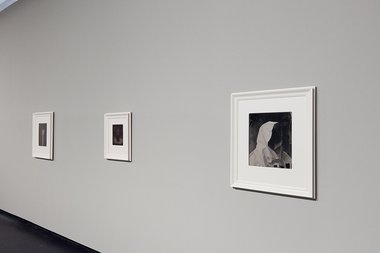
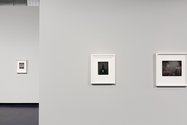
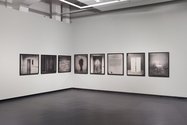
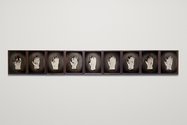
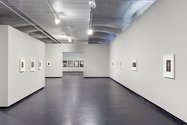
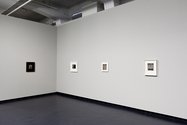
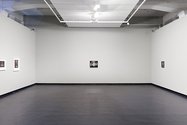
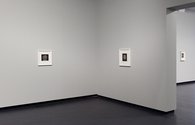
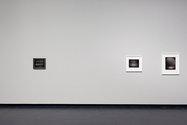
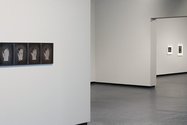
 Advertising in this column
Advertising in this column Two Rooms presents a program of residencies and projects
Two Rooms presents a program of residencies and projects



This Discussion has 0 comments.
Comment
Participate
Register to Participate.
Sign in
Sign in to an existing account.